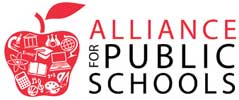The National Assessment of Educational Progress (NAEP) scores are out and show drops in math and reading not seen in decades. NAEP provides important information about student achievement and learning experiences in various subjects and assessments given in 4th, 8th and 12th grades. NAEP is a congressionally mandated program that is overseen and administered by the National Center for Education Statistics (NCES), within the U.S. Department of Education and the Institute of Education Sciences.
This year’s scores show declines in both reading and math at grades 4 and 8 for the majority of states in 2022, according to results released Monday. Average national reading scores in 2022 reverted back to levels last seen in the 1990s, and math scores saw the largest declines ever recorded in that subject. More from USA Today:
In 2022, average reading scores in fourth and eighth grades decreased by three points from 2019, and average math scores in fourth and eighth grades decreased by five and eight points respectively, the test results show. The test, which involved 446,700 students at 10,970 schools, across all states at the beginning of the calendar year, is scored on a scale of 0 to 500.
“Results in today’s Nation’s Report Card are appalling and unacceptable,” U.S. Education Secretary Miguel Cardona told reporters. “This is a moment of truth for education.”
Many assessment experts anticipated a decline in overall scores caused by the pandemic. So while the results are not unexpected, they are still concerning. More from K12Dive :
Historically, drops have only been by a couple of points. So declines in the 8-point range, such as in math, are especially troubling, National Center for Education Statistics Commissioner Peggy Carr remarked.
Carr said she had expected a steeper decline in math than in reading, considering parents are more comfortable teaching their children reading than math at home.
The results tell much of the same story already shown by research and in prior tests, such as NAEP long-term trend assessments released over the summer. “Everything is pointing in the same direction,” said Michael Petrilli, president of the Fordham Institute. “The pandemic and the resulting disruptions to learning were really bad for student achievement.”
Nonetheless, Carr said, there are some “reasons to be hopeful.”
In 26 selected big city districts — which represent about 9% of the nation’s public school children and have worked to close gaps for historically marginalized students — the majority showed reading scores that were steady compared to 2019 in both grades.
Education researchers and assessment experts have theorized the longer schools were closed, the larger the learning lags. However, Carr warned there is no such direct link in the latest NAEP results.
“We cannot find anything in this data that says that the results we are looking at can be solely primarily attributable to differences in how long students stayed in remote learning,” she said.
While it could be a factor, she said, there are many other things that could be contributing to the declines and need to be studied more extensively. Among those factors are mental health and behavioral challenges, according to Carr.
NAEP’s data identifies achievement gaps. For example, scores diverged in 4th grade math for Black and Hispanic students compared to White students, for female and male students, and for those eligible for free and reduced-price lunch compared to those not eligible. No race — including White students — experienced a statistically significant improvement in average scores. Some gaps narrowed while scores for Black and Hispanic students stayed steady or declined at a slower rate.
The gap widened between higher- and lower-performing students. “Now what we’re seeing is students at the bottom of the distribution dropping even faster,” Carr said. And where students at the top previously showed improvement or held steady, they are now instead dropping as well — just not as steeply as their lower-performing peers.
Although districts have tried to cope with the pandemic’s fallout on students’ academics, many education experts are worried about the response to the magnitude of the learning loss experienced.
From the USA Today: U.S. Education Secretary Miguel Cardona said there must be a nationwide effort to recover and move students forward. And he’s calling on school leaders to leverage the funding and resources the Biden administration made available through the American Rescue Plan to address student learning loss.
“Let me be very clear: These results are not acceptable,” Cardona said. “We need to continue to approach the task of catching all of our students up with the urgency that this issue warrants. We must redouble our efforts to accelerate student recovery.”
Experts have widely agreed that increased tutoring opportunities and more instructional time are needed to bridge the gap.







